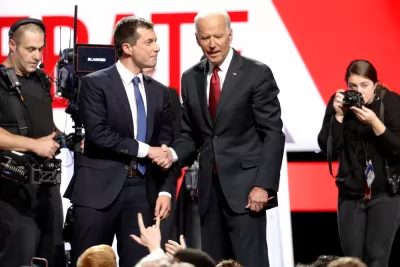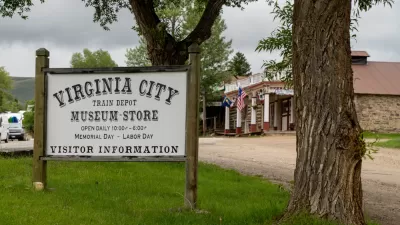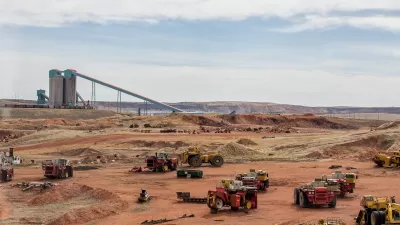Congress has an opportunity to acknowledge the racial inequity built into our failing infrastructure and to put into operation the promise of equity in Biden’s infrastructure plans.

The Biden presidency provides more than a glimmer of hope—and Congress has an incredible opportunity to join his vision— for an infrastructure package that will create generational investment in our communities, families, and children. Investing in housing, transit, and community institutions can be a promise and a commitment to begin to repair not just the damage of the previous presidency and the pandemic but also the cumulative impacts of other historical wrongdoings—such as redlining and segregation, income inequality, and environmental injustice.
The $2 trillion American Jobs Plan and its companion $1.8 trillion American Families Plan unveiled by Biden have lofty goals and are much needed: they include rebuilding 20,000 miles of roads, highways, and rail; confronting the climate crisis; curbing income inequality; improving community care facilities for seniors and people with disabilities; generating millions of new jobs; and making a focused set of investments in health care, child care, and education.
Congress has an opportunity it must not squander to acknowledge the racial inequity built into our failing infrastructure and put into operation the promise of equity in Biden’s infrastructure plans. To accomplish that we need to do two things: (1) invest in underinvested communities by pairing large-scale capital infrastructure and social investments with funding to develop a nimble and well-supported ecosystem that can translate those investments into real change in specific communities, and (2) guard against the kinds of unintended consequences that have beset previous initiatives.
Models for an Infrastructure Plan
Five historic, game-changing bills could provide a model for building community infrastructure and networks that increase community capacity to respond to pressing crises. All four created durable funding streams that allocated resources to communities of all sizes across the country . . .
FULL STORY: How to Get Racial Equity into Biden’s Infrastructure Plan

Planetizen Federal Action Tracker
A weekly monitor of how Trump’s orders and actions are impacting planners and planning in America.

San Francisco's School District Spent $105M To Build Affordable Housing for Teachers — And That's Just the Beginning
SFUSD joins a growing list of school districts using their land holdings to address housing affordability challenges faced by their own employees.

The Tiny, Adorable $7,000 Car Turning Japan Onto EVs
The single seat Mibot charges from a regular plug as quickly as an iPad, and is about half the price of an average EV.

With Protected Lanes, 460% More People Commute by Bike
For those needing more ammo, more data proving what we already knew is here.

In More Metros Than You’d Think, Suburbs are Now More Expensive Than the City
If you're moving to the burbs to save on square footage, data shows you should think again.

The States Losing Rural Delivery Rooms at an Alarming Pace
In some states, as few as 9% of rural hospitals still deliver babies. As a result, rising pre-term births, no adequate pre-term care and "harrowing" close calls are a growing reality.
Urban Design for Planners 1: Software Tools
This six-course series explores essential urban design concepts using open source software and equips planners with the tools they need to participate fully in the urban design process.
Planning for Universal Design
Learn the tools for implementing Universal Design in planning regulations.
Smith Gee Studio
City of Charlotte
City of Camden Redevelopment Agency
City of Astoria
Transportation Research & Education Center (TREC) at Portland State University
US High Speed Rail Association
City of Camden Redevelopment Agency
Municipality of Princeton (NJ)





























